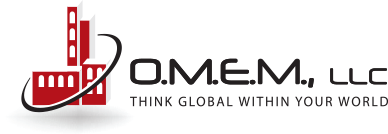One thing I often see in business is the separation between the leadership and the general workforce. While this attitude is becoming less and less, it does still exist. It is apt to be more prevalent in successful businesses. By separation, I am speaking about the attitude that the leadership is the elite decision makers and the workforce is merely just that, a simple workforce. As the business becomes more and more successful and financially established, it is easy to become psychologically separated from others that work within the organization. It is a good feeling to know you were instrumental and what might seem, single handedly responsible for, the current state of the organization. This is not to say the mindset is such that success was accomplished without a staff. It isnt the physical work thought process, but the strategic direction and smart decisions that has set the business on a successful path. It is good to be feeling high with self-esteem and confidence as the path has certainly been a tough one for sure. If you consider the life cycle of progress a business takes on the typical path to what you established as success, there are three main phases. With this, Im not referring to multiple products, storefront, or service locations. I am referring to the very first one to be produced or opened.
The first phase is usually the hardest. This is not to say the other phases are easy by normal means, but they are very different in focus. The first phase consists of a lot of hands on working. A very important component is the direct focus required on many things at once to keep up with demands. Many tasks are happening simultaneously in an environment that probably is new to an owner or partners. It will require long hours and hard work to keep up with demands. A lot of first time activities can occur with many, never before thought about, or not necessarily considered before starting the business. On top of everything physically going on, there is always the financial piece to keep in mind. Finding a balance between when to spend value added money and when to hold up. The initial debt looms in your mind, paying other bills, paying extra close attention to quality and delivery, and all the other things related to making that first impression. The stress can be higher than normal due to all the nuances involved that may also be new to the leadership. The tendency is often to micro manage as many things as possible due to a relatively low level of confidence in those around you. This is normal, warranted, and if handled well, will establish a reasonably high level of expectation to be followed ongoing. It will also, if handled properly, establish a relationship with the work force and a confidence from them, to you as a leader. You may not be making a pay check yet, or possibly a very modest one. The time frame in this phase can be months or even a year or more.
Phase two in the successful business continuum, is where the business is starting to really take off. There is a certain amount of security with future orders for products or services. Some of the past worries should have subsided somewhat but there is still a focus to keep things moving along at a steady pace. The transition from the hands on specific tasks can now be shifted to broader duties. You should be able to start letting go of the micro-managing and allowing the work force to manage routine processes on their own. Remember previous blogging discussions about measurements? This is where measurements that are well focused and value added, become important. Let the workforce manage the process and utilize measures for the consistency and progress. The focus of the owners or partners begins to move more towards a strategic and broader scope. The vision becomes more from an outside perspective as opposed to in the middle of all the activities. While I am not indicating to let go completely of the internal operations, there should be some arms length distance beginning to develop between micro operations and macro business functions. The time frame in this phase will typically be more than a year and can take quite a while to get through but the climb is respectively still quick.
Phase three is where the business is well on its way to long term sustainability. The clientele is established and shown to be fairly loyal. The work force is well established and able to function in a stride that is measurable and performing well. The confidence is high and the work has paid off
right? Be careful in this phase. This is the phase where things can go awry very quickly. It is easy to get too far out of touch with what is really happening within the organization. Buy this phase you should be taking a draw either by salary or simple determined stipend. This phase is also where you need to be seeing everything from a very high level and functioning mainly in a strategic environment. A lot of coaching may still exist as the work force will still need guidance and directional focus. One large potential falter in this phase is a complete let go of the organization assuming things are functionally locked in. Another thing I see form time to time, this is the phase where the leadership begins to distance themselves from the rest of the organization. Not from a working perspective, but from a psychological perspective. This is where the mindset forms into an elitist frame of mind. This is also where I would say; keep in touch with your roots. Dont lose sight of what it took to get to where things are at. Dont forget all the hands that helped you to get there.
The three phases that a typical business cycle has progress through on its journey to success, takes time, hard work, and perseverance. If the expansion and growth has not yet started, it could very well start soon if the strategic focus had a target for growth. However, it is very important to stay true to where you started. It wouldnt have happened without help from everyone involved in the organization up to this point, regardless if they are still around or not. The fact is, success would not have come without help from others. If you had to do it again, even though the experiences are similar and many unknowns are now somewhat well known, it still took more than just one owner or a few partners to get to the level the business is at. Build on the experiences, but start again through the same process as the business cycle will once again reset to phase one once the growth or expansion kicks in. If you are following my improvement series and are not able to connect all the dots or have questions, get help. You might be surprised how little of an investment it may take to make a huge foundational step forward.
Stay Well
Scott B.
0 Comments
Leave a reply
You must be logged in to post a comment.



